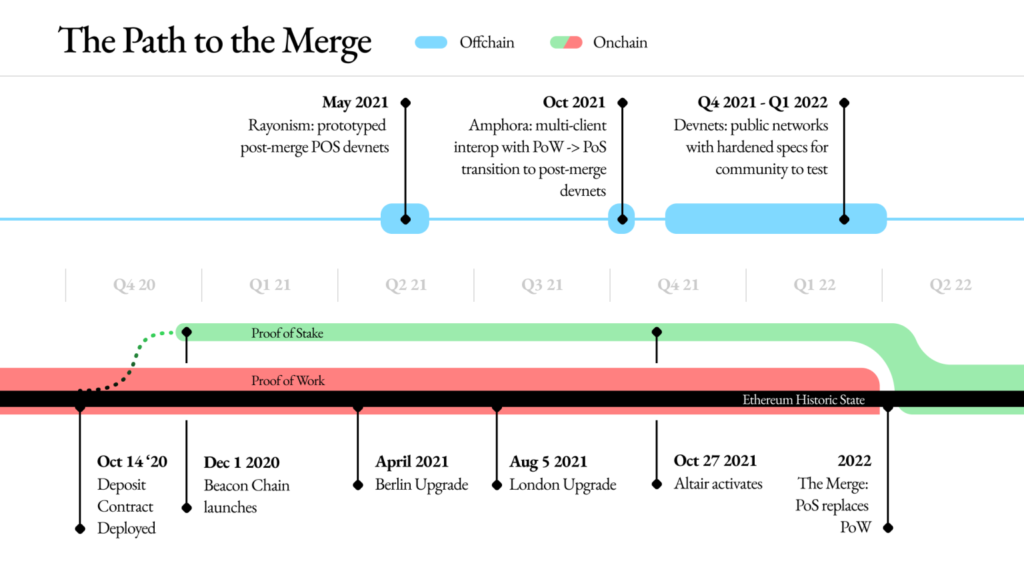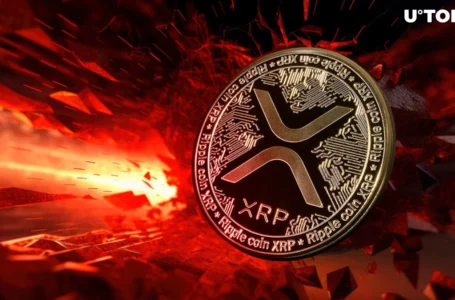
In 23 days the Ethereum network will transition to a proof-of-stake (PoS) consensus algorithm after operating as a proof-of-work (PoW) blockchain since July 30, 2015. While the change may not mean much to ethereum users and traders, what’s changing under the hood is a very big deal.
You’ve heard of merge, why is it a big deal?
The next month will be a crucial time for the Ethereum network and its participants. The merge will likely be one of the most anticipated and recognizable upgrades that blockchain has seen since the DAO hard fork. On or around September 15, 2022, Ethereum will implement The Merge and this means that the chain will completely replace the one-time consensus mechanism. Since the blockchain was created, Ethereum’s consensus mechanism has been a proof-of-work (PoW) scheme similar to Bitcoin’s consensus mechanism.
However, instead of the PoW consensus mechanism SHA256, Ethereum relies on a scheme called Ethash, a PoW consensus agreement preceded by a mechanism known as Dagger-Hashimoto. The main goal of Ethash was to offer ASIC resistance but after a few years, Ethash ASIC miners appeared on the market alongside the use of graphics processing units (GPUs). Similar to Bitcoin’s PoW consensus algorithm, Ethash miners must put forth the computational cost of purchasing and operating ASIC or GPU miners, and using electricity.

When the merge occurs, Ethereum will no longer rely on miners to validate transactions. Instead, transactions across the network will be validated by entities called validators. Using the PoS consensus mechanism, Ethereum validators are chosen by the owner of 32 Ether and are required to run three different software which includes a validator, an execution client and a consensus client. At the time of writing, 13,406,821 ETH has been added to the Ethereum 2.0 contract and has over 416,000 validators.
The Ethereum blockchain’s roadmap has had plans to become a PoS chain for a number of years. The Ethereum Foundation provides six different reasons why PoS is an improvement and one of the most talked about is “better energy efficiency.” The Ethereum Foundation’s summary of ETH’s transition to PoS also says that the consensus mechanism provides “lower barriers to entry” because of “reduced hardware requirements” and “there is no need for elite hardware to stand a chance of creating new blocks.”
Ethereum’s proof-of-work miners, those with ASICs and GPUs, will need another crypto asset that leverages the EthHash algorithm and there are few that exist today. Miners can choose from mining Ethereum Classic, Ravencoin, Ergo, Beam and possibly a new PoW Ethereum fork built between merge transitions. A few days ago, on August 20, 2022, the hash rate of Ethereum Classic reached an all-time high. Ethereum (ETH) will follow a new set of consensus rules and mining Ethereum with machines will become obsolete. While the topic of PoS has been discussed a lot, the development towards reaching the goal has also been successful.
Presently, Ethereum runs a PoS chain called the Beacon chain that runs parallel with the PoW blockchain network. Developers have safely docked The Merge with all three major testnets — Ropsten, Sepolia, and Goerli — and approximately nine shadow forks have been executed. The Merge will be executed on Ethereum’s main network on or around September 15, 2022, or when the total difficulty reaches 58750000000000000000000. At that time the network will merge with the PoS consensus mechanism that has been applied to the Beacon chain, and the testnets Ropsten, Sepolia, and Goerli.


















